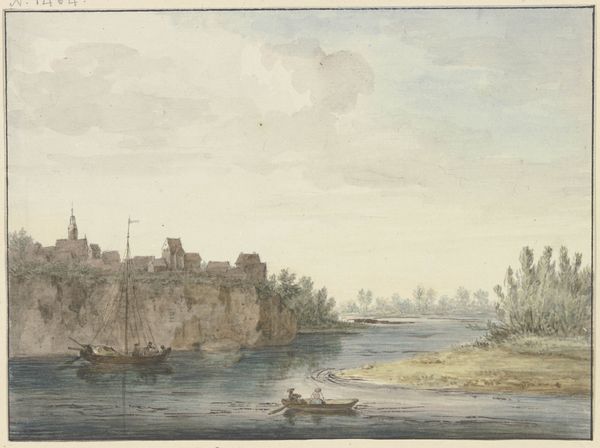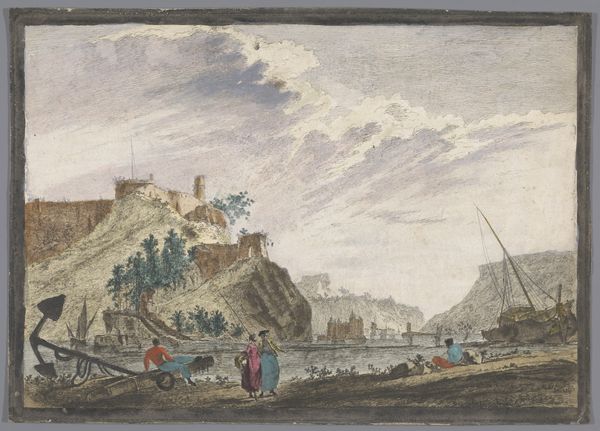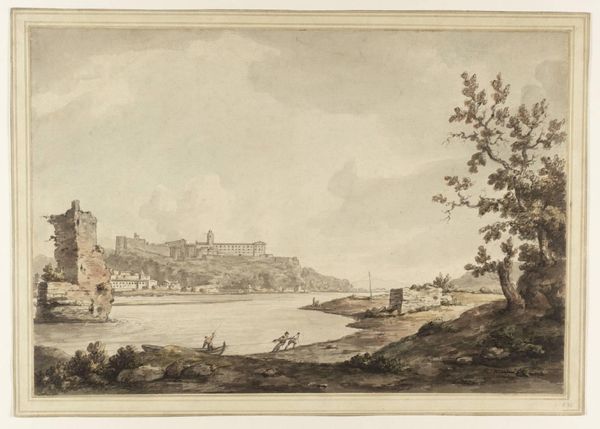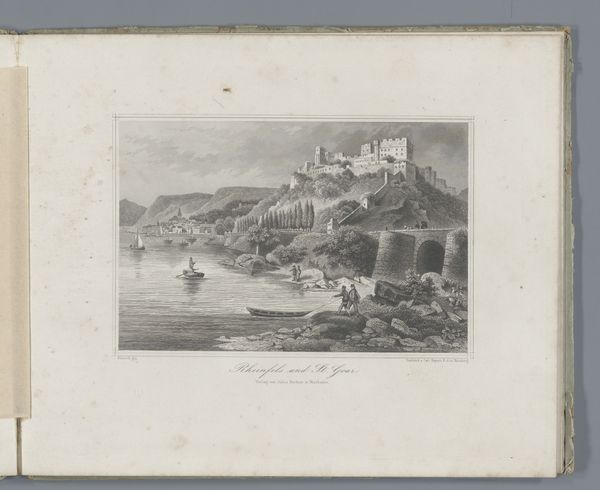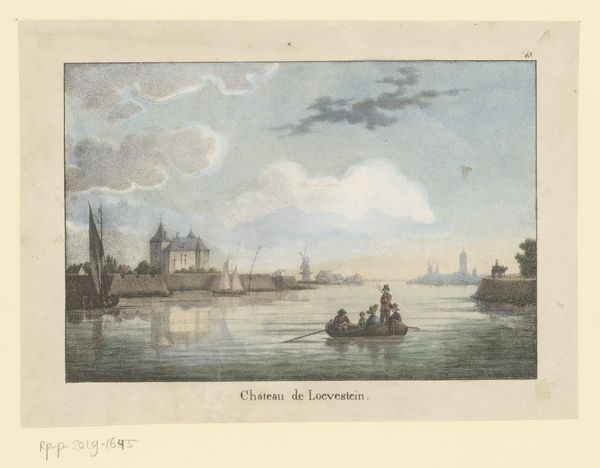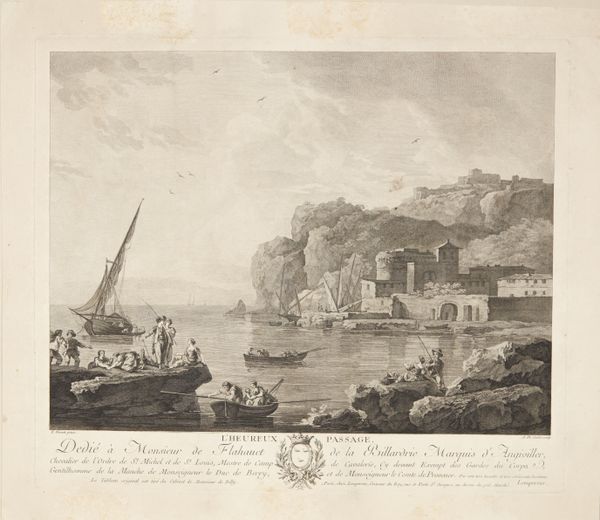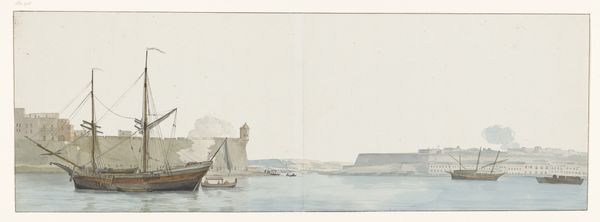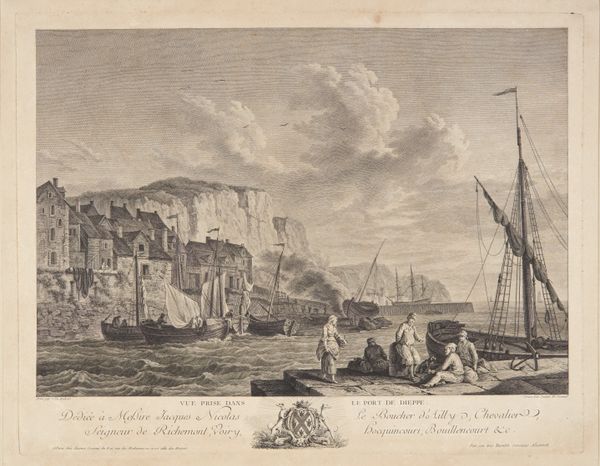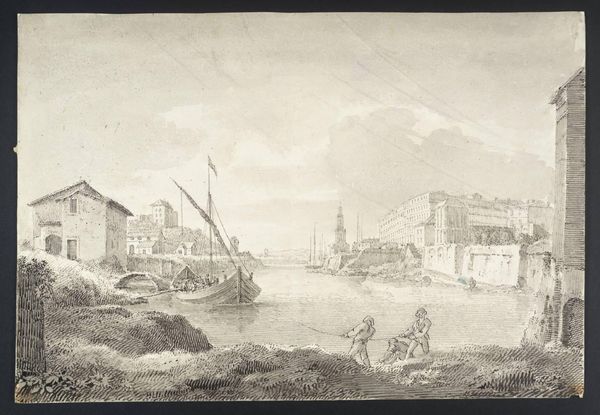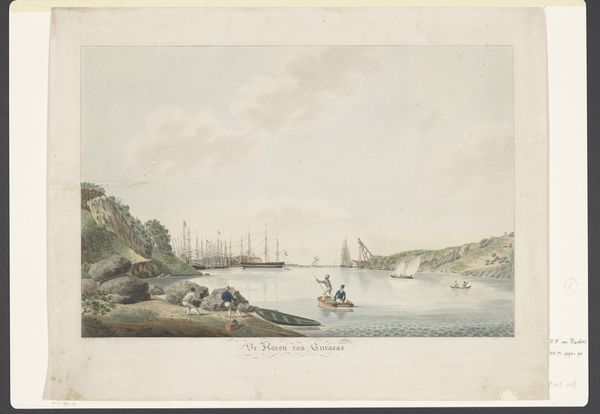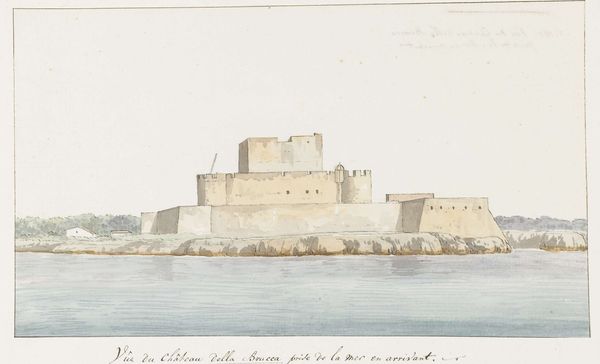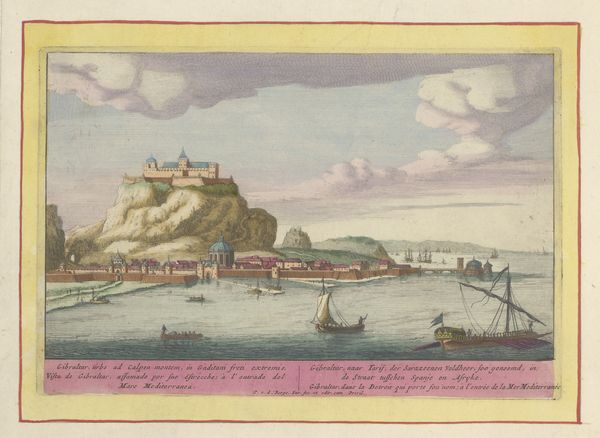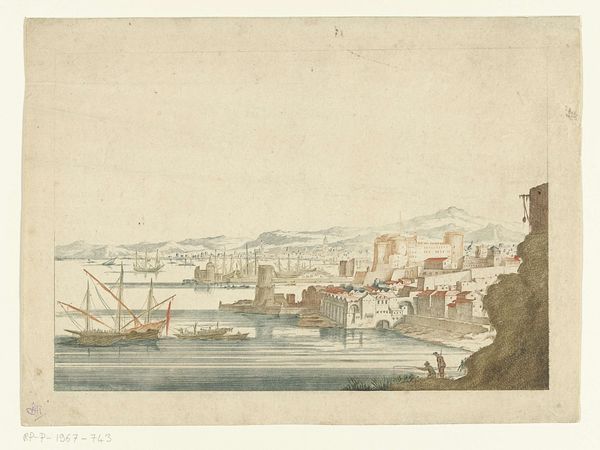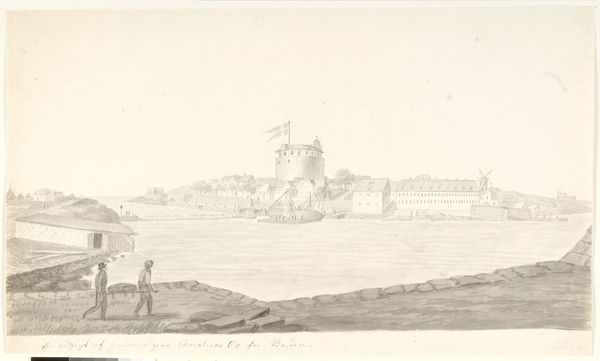
View of the Coastline of Posilipo at Naples, from Views of Italy 1817
0:00
0:00
drawing, lithograph, print, paper, watercolor
#
drawing
#
lithograph
# print
#
landscape
#
paper
#
watercolor
#
romanticism
#
cityscape
Dimensions: 201 × 293 mm (image); 235 × 324 mm (sheet)
Copyright: Public Domain
Curator: Constant Bourgeois crafted this lovely "View of the Coastline of Posilipo at Naples" around 1817. It combines drawing, lithography, and watercolor on paper. Quite a mix of techniques, wouldn’t you say? Editor: Indeed. My immediate impression is one of serene, almost melancholic tranquility. The pastel palette contributes heavily, especially how it casts soft shadows. But tell me more about Bourgeois and his choice of materials. Curator: Bourgeois, though not a household name, demonstrates a mastery over these mediums. He orchestrates line and color to build space; notice the strong diagonal movement established between the foreground rocks and the city at a distance. There is a romantic sensibility, which pervades. Editor: I find myself more drawn to the paper substrate itself and the printing process; lithography, during that period, would still be considered quite novel. Was this artwork conceived as a singular piece, or was it intended for mass production? Was watercolor added by hand after printing, as this print might suggest? Curator: "Views of Italy" was precisely the name of this artwork's series! Bourgeois most likely imagined a wide distribution. Lithography allowed for multiple impressions, albeit the watercolor gives each a unique flair. Note how the man fishing or the figures in their canoe add a narrative element... it is meant to entice. Editor: These touches feel almost staged, intended to evoke desire for the Neapolitan coast and life. How might that have translated into patronage or economic viability? What about his technique to build this sense of romantic place, labor conditions in 19th century printshops... what are your thoughts? Curator: Semiotically speaking, it speaks to bourgeois desires for an idealized landscape; a signifier of escape and perhaps even conquest through ownership and possession of the printed image. But ultimately, for Bourgeois, the harmony in composition and tonal value comes together and invites a momentary visual retreat. Editor: Still, I think situating "Views of Italy" within 19th-century commodity culture adds critical context. It acknowledges those nameless artisans laboring behind the scenes to reproduce beauty and facilitates its distribution. So much hidden labor facilitated bourgeois aspirations, after all. Curator: Very well. By engaging different methods for interpreting Bourgeois’ work, we bring it, hopefully, to richer light. Editor: Yes, a convergence that reveals how intertwined our approaches inevitably are.
Comments
No comments
Be the first to comment and join the conversation on the ultimate creative platform.
